Bottom line recommendation:
VVS diamonds are considered premium diamonds and offer extremely high clarity. The average price of 1.00 carat VVS diamonds ranges from $5000 to $8000 per carat. Another option is to buy an identical lab-grown diamond, pay an affordable price such as this option and save your money, or invest in a much larger diamond such as this 2.00 carat VVS diamond.
For the largest inventory of VVS diamonds, both natural and lab-grown diamonds, visit James Allen and Blue Nile
My top picks for VVS
Deal Alerts!
RECOMMENDED RELIABLE SELLERS ONLY.
Up to 50% OFF Selected Jewelry at Blue Nile
Instant $100 off when signing up + 3% discount on wire transfer at Whiteflash
Table of Contents
VVS diamonds are considered a premium product; we are talking about big bucks here. This comprehensive guide will cover everything you need to know about VVS diamonds. After reading this, you’ll be able to buy your diamond confidently and make the right choice.
what does VVS mean?
The acronym VVS stands for “Very, Very Slightly” included. Think about it. Most diamonds are dirty and carry many inclusions, such as this I1 diamond. In fact, only about 20% of mined diamonds are suitable for jewelry; the remainder is sold for industrial applications. It’s rare to find a diamond with no inclusions, which is why VVS diamonds are precious and considered a premium product. Take 5 seconds and try to spot the inclusion of this diamond. Did you find it? If you find the inclusion within the first 5 seconds, congrats! You have a good eye.
(Let me give you a hint: it’s a little white dot near 7 o’clock)
I1 clarity vs. VVS2 clarity under 40X magnification
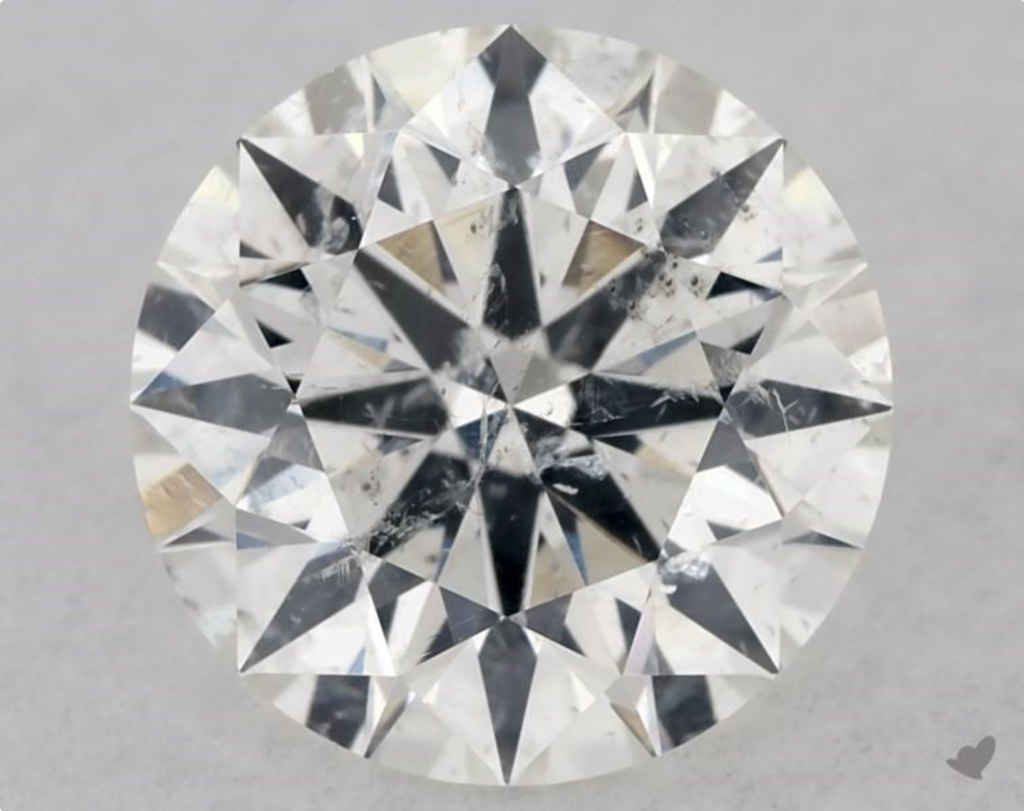
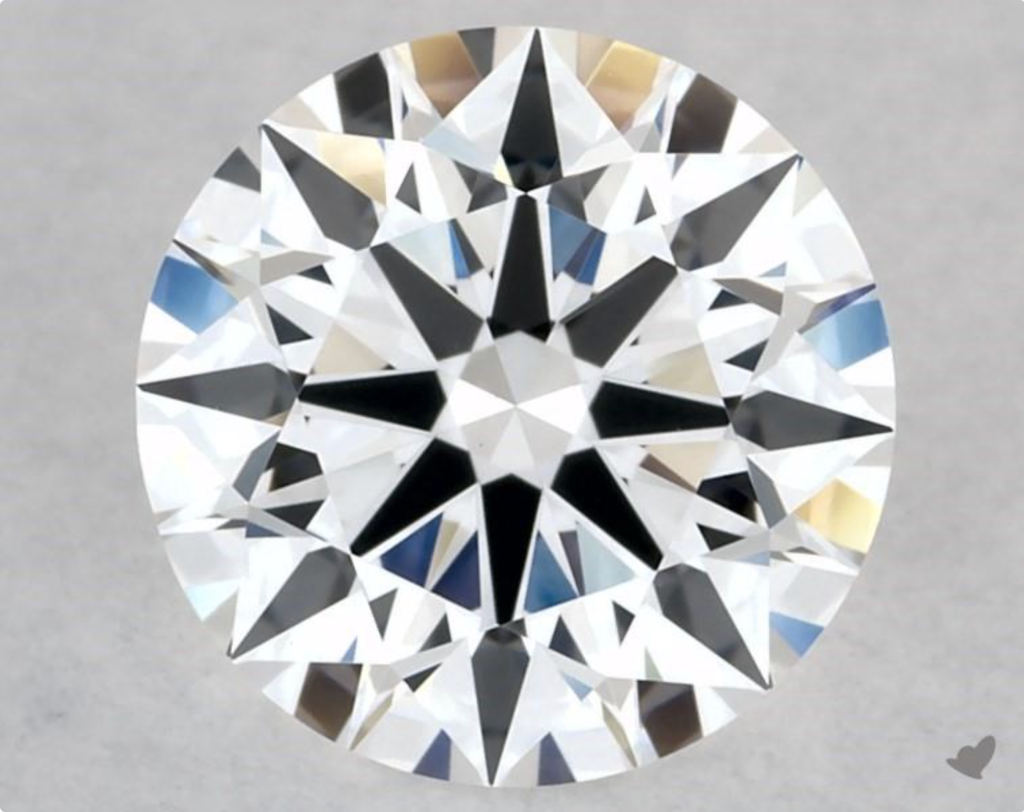
VVS inclusions are so tiny that sometimes even a trained gemologist can’t find them under magnification (It takes time and patience). Because of that, VVS diamonds are also known as “loupe clean.”
Because VVS diamonds are so valuable, most jewelry stores don’t have them in stock. Having such a diamond in inventory would involve a higher insurance rate. Other than that, store owners prefer to sell mainly SI diamonds because those are the grades typical customers look for.
SI1 diamonds
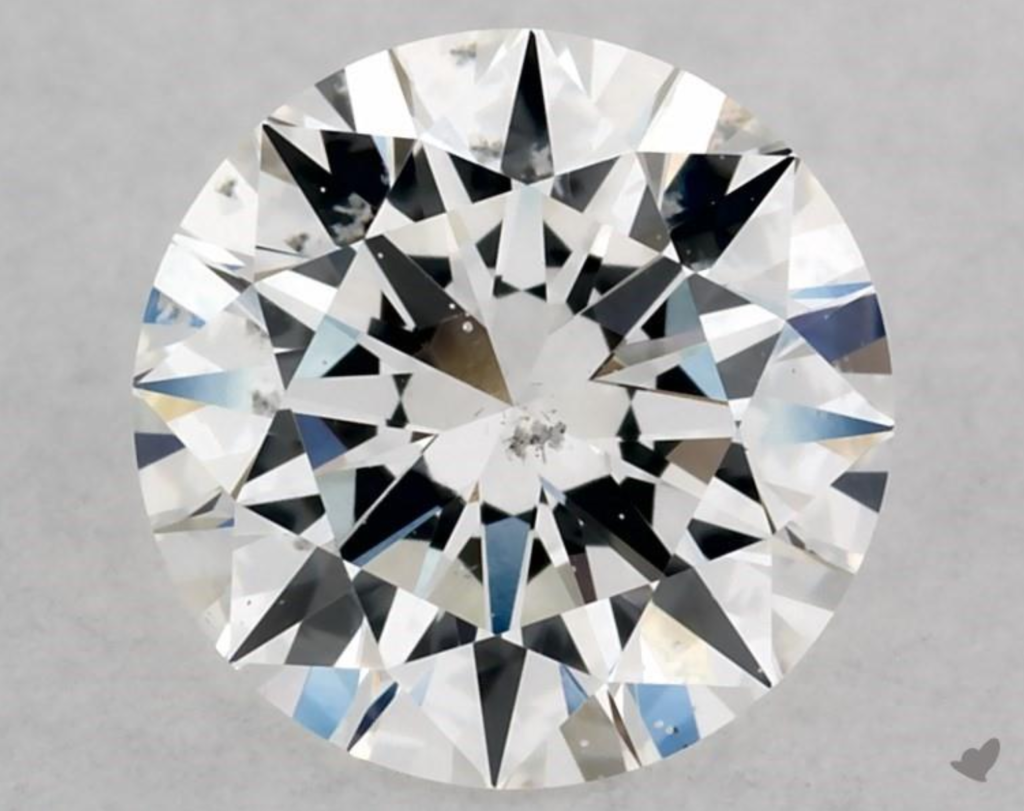
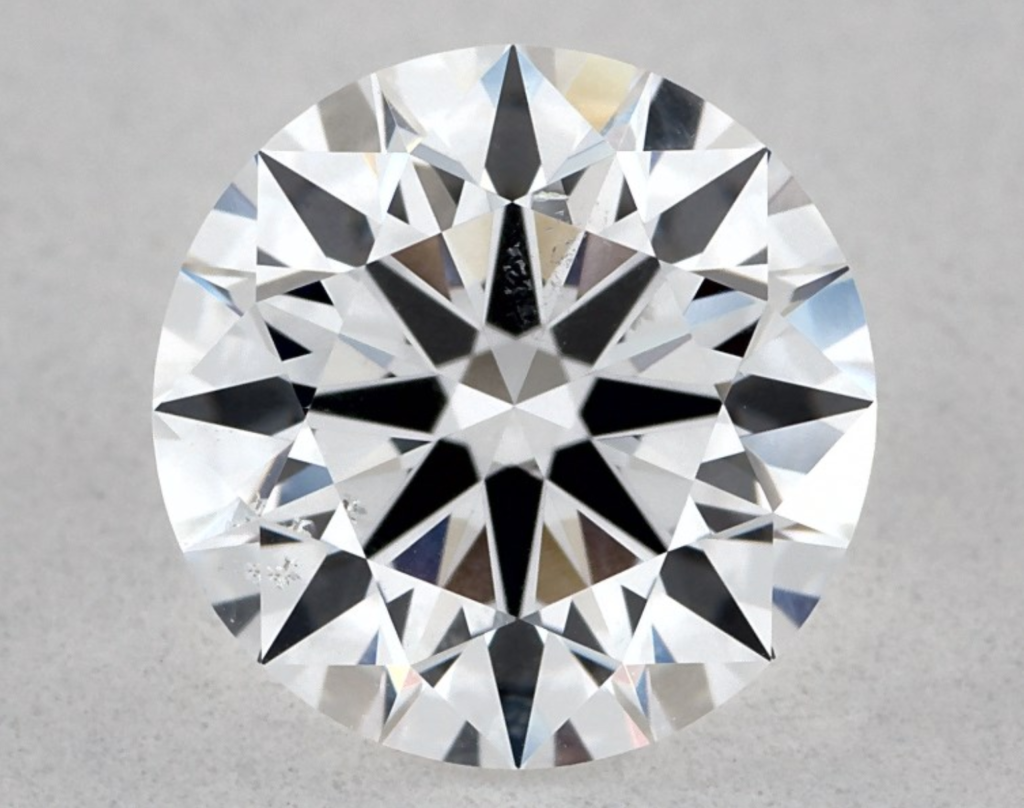
The good news is that online stores like James Allen and Brilliant Earth offer lots of VVS diamonds, both natural and lab-grown. If you need help finding the right one, just contact me here.
What are VVS diamonds?
Put simply, VVS are extremely clean diamonds. They carry almost no inclusions, the closest to flawless diamonds. Their inclusions are so tiny that they are only visible under a 20x-40x magnification (if you have a good eye). Based on that, the grading labs grade them as “Very, Very Slightly Included.”
VVS diamonds take a small percentage of all the diamonds mined annually. Only about 20% of all the diamonds mined are considered gem quality, and only a tiny percentage of those are VVS.
Like any other diamond, the price of a VVS diamond is determined by the “Four Cs” of diamonds: Carat, Cut, Clarity, and Color. The average price of 1.00 carat VVS diamonds ranges from $5000 to $8000 per carat.
You can start your way with a J color for $5,320 like this
Or go with higher color such as this D colorless, and pay $8,000 +
Keep in mind that lab-grown diamonds are much more affordable. You can buy a VVS diamond while saving 30%-70% of your budget, as you can see here.
VVS Diamonds and the clarity chart
VVS diamonds are in the top 3 of the clarity chart, right after Flawless (FL) and internally flawless (IF) diamonds. These diamonds will appear eye-clean and flawless to the naked eye. There are two grades within the VVS category: VVS1 and VVS2. The distinction between the two is based on the location, size, type, and the number of inclusions. Because of their scarcity, they represent excellent value for money. They offer one of the highest levels of clarity while maintaining relative affordability. In fact, a VVS diamond will look identical to flawless (FL) and internally flawless (IF) diamonds to the naked eye.
| clarity grade | description | Example |
|---|---|---|
| Flawless (FL) | FL and IF are flawless diamonds with no inclusions or blemishes visible under 10x magnification. |
 |
| Internally flawless (IF) | No inclusions are visible, but some small blemishes may be visible under 10x magnification |
 |
| Very-very small inclusions 1 (VVS1) | Inclusions are very difficult to see under 10x magnification even for trained eyes. |
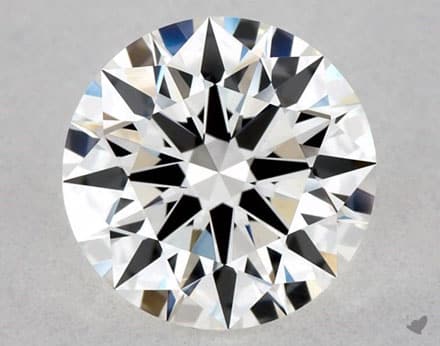 |
| Very-very small inclusions 2 (VVS2) | Inclusions are barley visible under 10x magnification, yet have slightly more inclusions than the VVS1 grade |
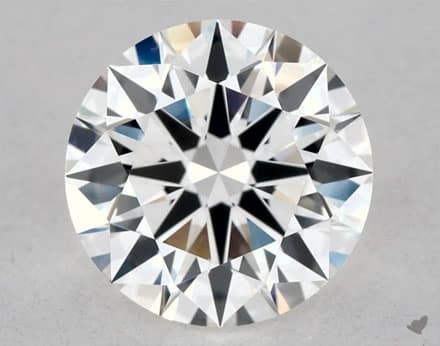 |
| Very small inclusions 1 (VS1) | Inclusions are minor and can't be seen without 10x magnification. |
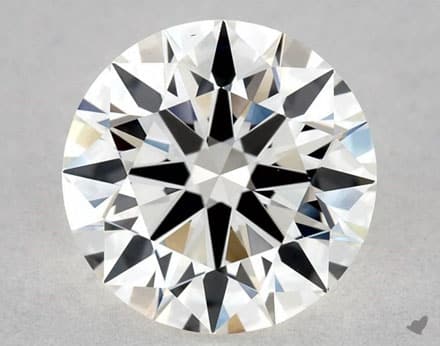 |
| Very small inclusions 2 (VS2) | Inclusions might be large enough in order to be easily noticeable under 10x magnification |
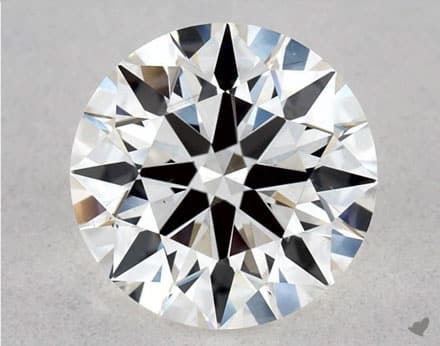 |
| Small inclusions 1 (SI1) | Inclusions are noticeable at 10x magnification and might be even seen by the naked eye |
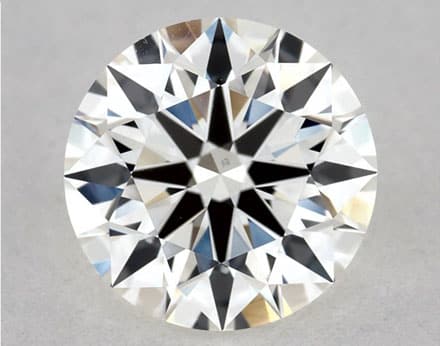 |
| Small inclusions 2 (SI2) | Inclusions are easily seen under 10x magnification and sometimes visible to the naked eye |
 |
| Inclusions (I1, I2, I3) | Inclusions are obvious under 10x magnification and visible to the naked eye |
 |
Are VVS diamonds eye-clean?
The term “eye-clean” is commonly used in the diamond industry. It describes a diamond with no inclusions visible to the naked eye. The test is simple:
- Don’t use a diamond loupe or any other tool to magnify it.
- Hold the diamond at a fair distance, let’s say 10-20 cm from your eyes.
- Can you see the inclusions? If not, it’s eye-clean.
As a rule of thumb, avoid diamonds with inclusions over the table (the main flat facet at the top of the diamond).
Flaws over the facets
While some inclusions are easier to see than others, the location of the inclusions is more important than their size or type. If the inclusion is located in the wrong location, it can create reflections all over the diamonds. For example, some diamonds have only one inclusion, yet you can see it in 5 different places.
You can see a good example here. Spin the diamond, and you’ll see that the inclusion over the table is also visible from the sides. That’s an ugly inclusion you want to avoid.
The “unfair” advantage of a VVS diamond is that 99.9% of the time, it would be eye-clean. However, if you want to ensure you’ve picked a good one, contact me here, and let’s talk.
What are VVS1 Diamonds?
If you check the GIA clarity chart, you’ll notice that VVS1 diamonds rank below IF (internally flawless) and FL (flawless) diamonds at the top. In other words, a VVS1 diamond is a very-very slightly included level 1. The inclusions are so minor that only an expert gemologist can see them using magnification tools.

For a diamond to be graded as VVS1, the grading lab must determine whether the inclusions are visible to the unaided eye. As expected, only an eye-clean diamond would reach the VVS1 level, but only after going through special tests.
Another element that lab graders observe is the specific location of the inclusion. Those near the diamond’s edge or on the surface are less valuable than those hidden in the interior. They have an impact on clarity and affect the overall beauty of the diamond. Keep in mind that no two diamonds are alike, and each has unique characteristics, even if they are of the same clarity grade.
What are VVS2 Diamonds?
VVS2 diamonds carry very-very small inclusions level 2. That means their inclusions are slightly larger than VVS1 or located at a “problematic” place. The main difference is that VVS2 diamonds have inclusions visible from the crown when observed under 10x-20x magnification. However, these inclusions are very difficult to spot to the naked eye. Of course, keep in mind everything is relative. VVS1 and VVS2 will look identical to the naked eye.
Both are considered extremely clean, and you likely won’t be able to tell the difference, even under a 40x magnification.
Test yourself: inspect these two diamonds and see if you can honestly tell the difference.
Test yourself: VVS1 vs. VVS2
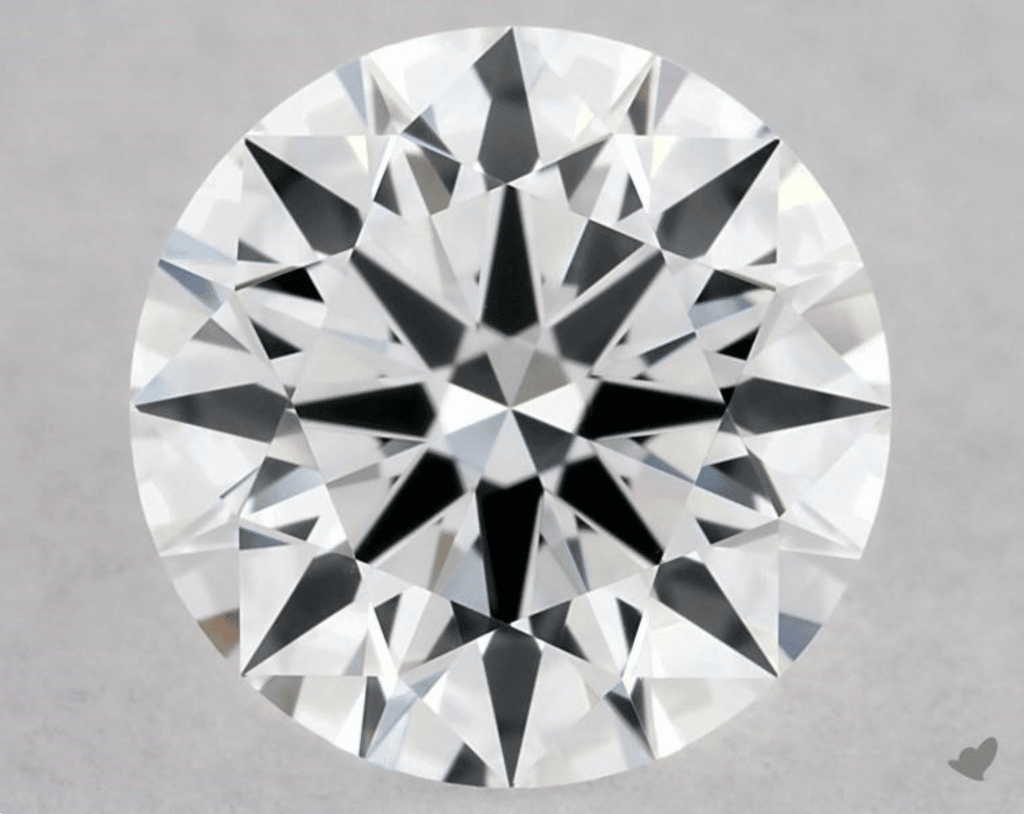
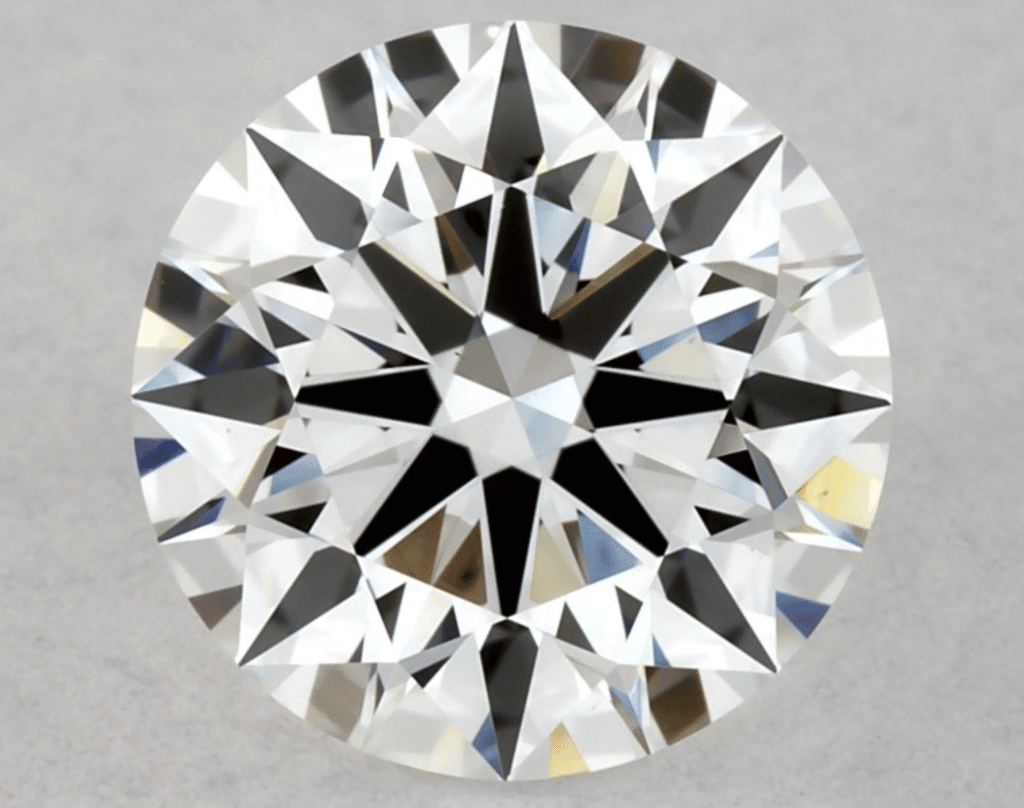
You can access the full videos of the diamonds here. Spin them and check if you find the flaw
(Hint: The VVS2 has a little dot over the table. You’ll never see it with the naked eye)
What to Look for When Buying VVS Diamonds?
Live market research
You should keep several things in mind when shopping for VVS diamonds. They include the following;
Cut
Not all VVS diamonds are beautiful. When thinking about diamonds, we mainly focus on their ability to sparkle and reflect light. The factor that controls those elements is the diamonds’ cut: proportions, symmetry, and polish. To ensure your diamond has high light performance, don’t compromise over it: Take only triple X diamonds.
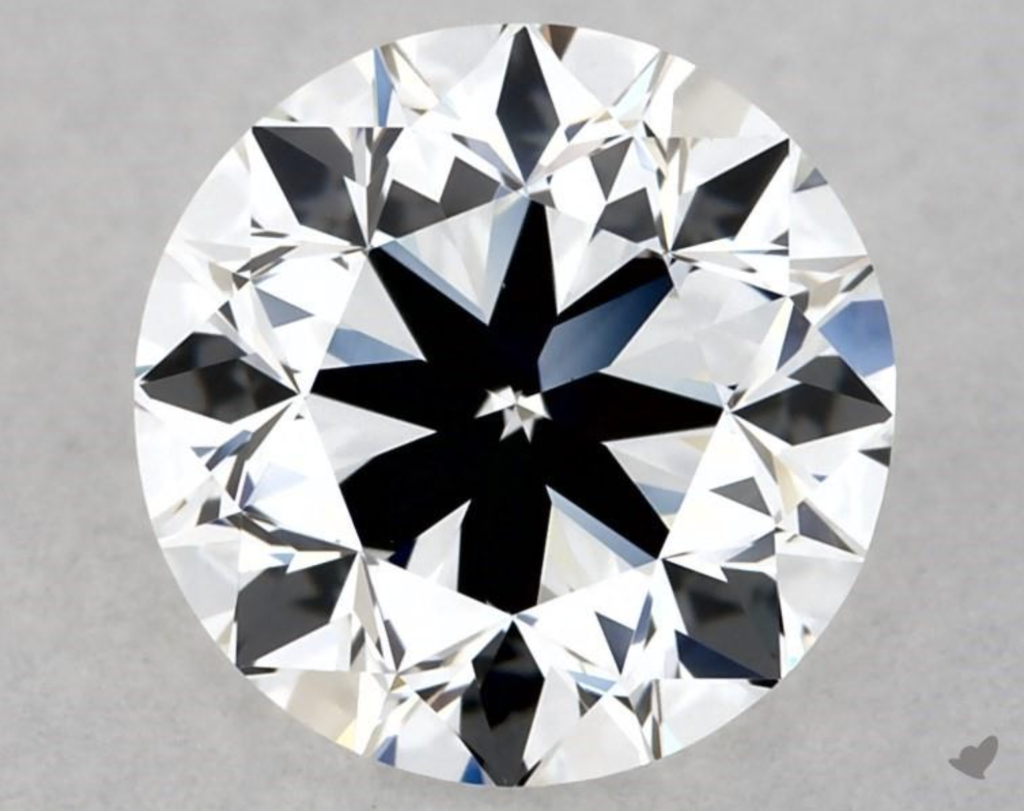

Color
The color of a diamond is graded on a scale from D (no hue) to Z (a yellow-hued diamond). As expected, as higher and colorless the color, the pricy it gets. Depending on your budget, you can pick a color grade that will leave you enough room to get a VVS diamond. Try to focus on D-J diamonds. When picked right, I-H diamonds will look colorless to the naked eye and can bring you the best bang for the buck.
K

H

E

Clarity
VVS diamonds are considered a premium product. If you are looking for a VVS, remember that VVS1 and VVS2 will look identical to the naked eye. Depending on your budget, I’d recommend getting a VVS2. This way, you’ll have more budget to invest in a larger diamond with better color.
Carat
While most customers think that the carat factor measures the size of the diamond, it actually measures its weight. Depending on what you are looking for (and on your budget), you can find here VVS diamonds from 0.10 and up to 10.00 carat.
Lab-grown diamonds
Since lab-grown diamonds are much more affordable, it would be much easier for you to find a beautiful VVS diamond. There are 1.00 carat VVS diamonds from $1,600 and higher. Depending on all the 4c’s, you can get a perfect 1.00 carat VVS diamond for around $2,000
What is the difference between VVS and VS clarity?
To be completely honest with you, in most cases, the naked eye can’t tell the difference between a VS1 and a VVS diamond. Most VS2 diamonds are eye-clean, but sometimes we can spot their flaws easily with a 10X magnification. That being said, almost any VS1 diamond is eye-clean. The main reason to pick a VVS over a VS1 is its higher value; it’s a premium product. Plain simple.
In terms of details, the main difference between VS and VVS diamonds are the following:
- Size: A VS diamond would have larger flaws
- Color: VS inclusions would be harsher and popping to the eye. Their color would be more visible (black or white).
- Location: VS diamonds can have inclusions over the table, while VVS usually carry the inclusions over the side facets.
- Price: VVS diamonds involve a higher ticket pricing due to their rarity.
VS2 vs. VVS2 under 40X magnification
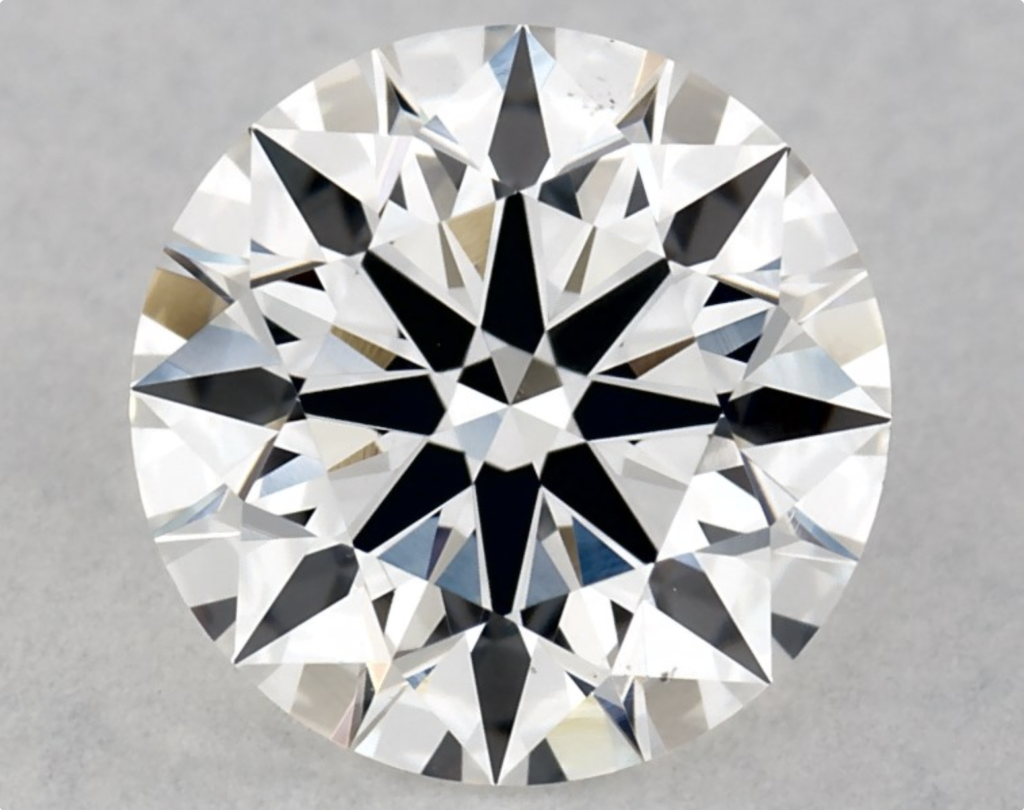

Can’t find the flaws of the of VS2? Good, you can save lots of money by going with an eye-clean VS2 instead of a VVS diamond.
Factors to consider when buying VVS diamonds
The main mistake customers often make when buying diamonds is giving too much weight to VVS diamonds. Many diamond noobies are afraid of VS diamonds. They prefer to compromise over the other c’s (carat, color, cut) to ensure their diamond is clean by taking a VVS.
This is wrong. Most VS1 diamonds would be eye-clean to the naked eye. An untrained buyer won’t be able to tell the difference between a VS1 and a VVS when inspecting the diamond.
The first question you should ask yourself is what carat weight you aim for within your budget. After that, pick a diamond with good brilliance and sparkles. The whole point of a diamond is to make sure it sparkles, right? Only after that you can pick the right color and clarity.
My point is unless you have a large budget, ensure you get a good balance between all factors.
After you reach your minimum carat goal and have enough room to invest in a VVS – Go for it!
Another alternative would be to go with a lab-grown diamond.
While a 1.00 carat D VVS2 would cost you $8,680 (without a setting), you can save 75% of your money and get an identical lab-grown diamond like this one. Another good option is to invest more and get a larger VVS lab-grown diamond.
How is a VVS diamond graded?
By inspecting the diamond with magnification tools, any inclusions found in the diamond will be graded based on several factors, including position, number, type, level, color, and size. They will also verify whether the inclusions are internal or external.
Grading labs can also check if the diamond went through post-growth treatment to enhance its color and clarity (laser drilling or HPHT treatment). A reliable seller should disclose this information and offer such a diamond at a discounted price.
Conclusion
As you can see, VVS diamonds are an excellent choice for those looking for a high-quality, clean and premium diamond. They are rare, beautiful, and have excellent clarity. If you want a more affordable option, consider getting a VS natural diamond or a VVS lab-grown diamond.
People also ask:
The diamond 4c’s: Carat, cut, color and clarity explained
What’s the right carat weight for your budget?
How to pick the right diamond color for your engagement ring?
What’s diamond clarity? Which one is right for you?
How to pick the best cut for your diamond?
What’s diamond fluorescence and how does it affect the overall appearance and price of a diamond?
What’s the difference between diamond cut and diamond shape?
















